#Craterellus tubaeformis
Text



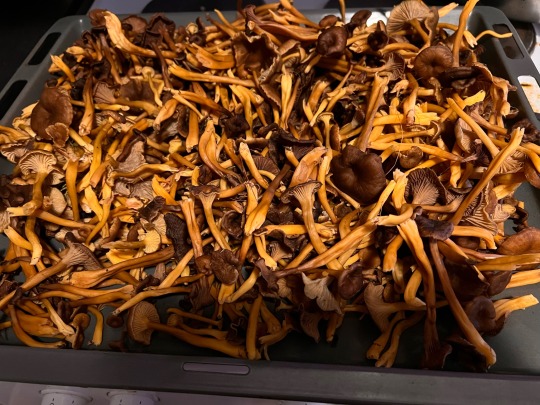
Funnel chanterelle foraging💛
#funnel chanterelle#chanterelle#Craterellus tubaeformis#fungus#yellowfoot#winter mushroom#mushroom#mushrooms#foraging#autumn#edible fungi#fungi#woods#nature
1 note
·
View note
Text

yellowfoot / craterellus tubaeformis
Rhineland-Palatinate, Germany
#jojoliverphotography#mushrooms#fungi#mycology#fungus#cottagecore#nature#forest#nature photography#europe#germany#photography#photographers on tumblr#lensblr#wilderness#adventure#foraging#my photography
62 notes
·
View notes
Text
the harveston sledathon event: jade leech's "incantation"
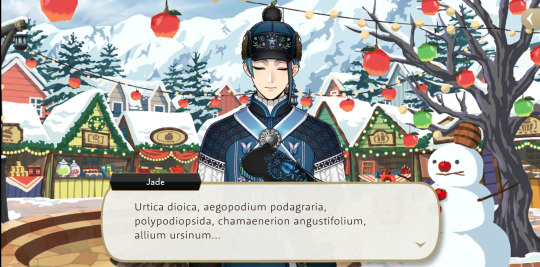

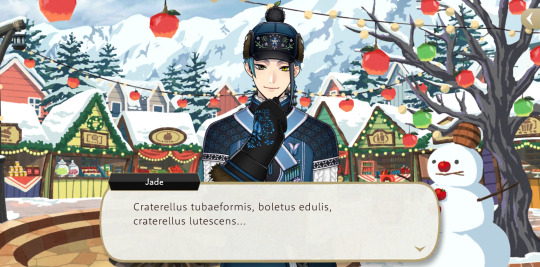
i'm not sure if everyone has gotten to this part in the new english server event yet, but this part when they were at the market got me curious. so, in typical me fashion, i committed a day of research to figure out what the hell jade was talking about.
first i would like to say that this was put together with A DAYS WORTH OF RESEARCH so if you know more about these plants/mushrooms and would like to add information or correct me please do so in the replies!! i'm not an expert by any means LMAO
with that said, onto the first plant!! i will list the scientific name that jade uses first and then the common name in parentheses. each plant/mushroom will have a picture after the short description for reference!!
i got all these images from google obv
~~~~~
Urtica dioica (Stinging Nettle) - A perennial herb that grows best in moist areas. Grows in late fall to early spring. Fall sun, partial shade. Used as an herbal remedy for sore muscles and seasonal allergies.

Aegopodium podagraria (Ground Elder) - Marked as an invasive species in some of the eastern states of the US (Pennsylvania, Connecticut, New Jersey, Vermont, Michigan, and Wiscousin.) Thrives in moist soil and grows during the summer. It’s commonly used in soup and as a remedy for gouts.

Polypodiopsida (Ferns!!!) - Thrives in moist soil and grows near rivers and creeks. Grows in shady locations in early spring. They reproduce with spores. Fiddlehead ferns are the curled up fronds of a young fern that can be cooked and eaten in various ways (steamed, fried & stored, roasted, pickled, etc.) They can also be used as fertilizer and for landscaping.
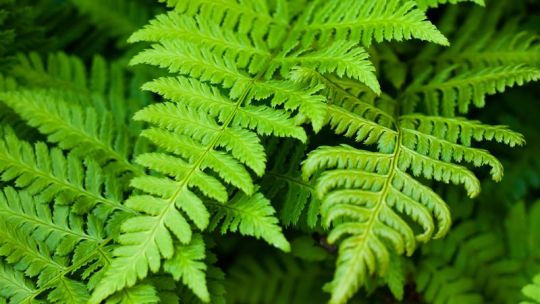
Chamaenerion angustifolium (Fireweed) - A perennial herb that flowers in June to September. Grows in full sun to partial shade and moist, well drained soil. Its primary use is medicine but it’s also used in tea, which in turn can be used to treat migraines, infections, and colds. Young fireweed shoots can be cooked and eaten (apparently, they taste like asparagus and should be cooked like them, too.)
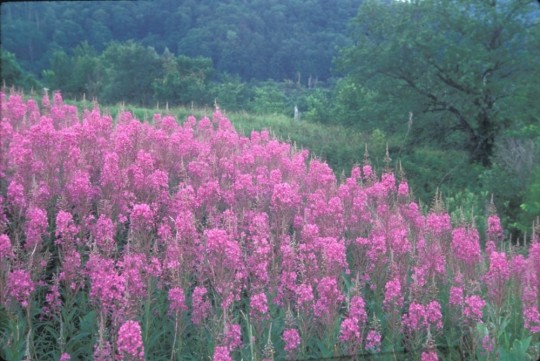
Allium ursinum (Wild Garlic or Cowleek) - Thrives in slightly acidic soil & moist conditions. Prefers shady conditions and grows around winter to spring, with a peak season of February to April. You can eat basically the whole plant, but if you eat the bulb the plant obviously won’t grow back. It’s been used as a medical plant and in cooking.
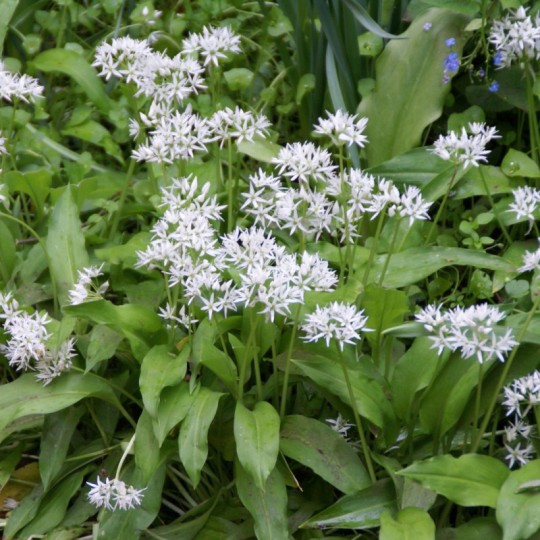
Sorbus (Mountain Ash or Rowan) - A bush that produces edible berries in late summer into early fall, and they stay on the tree into winter. The berries should not be eaten raw, but should be cooked because they contain parasorbic acid. The cooking process converts the parasorbic acid into a preservative sorbic acid. Their astringent taste is made sweeter by the frost. They grow best in full sun to partial shade and moist, well drained soil. They usually grow up to 15 meters tall.

Plantago major (Broadleaf Plantain) - A perennial herb that grows in late spring to summer (and sometimes in autumn.) They prefer moist soil but are very adaptable. Grows in moderate shade to full sun. The entire plant is edible, but apparently the flower shoots are especially delicious. They naturally grow in very dense populations and are easy to harvest. Works as a medicinal herb to treat inflammation and boost the immune system.

Equisetum arvense (Field horsetail) - Another perennial herb that grows from summer to the first frost. Grows in moist soil with full to partial sun. Can be used in tea and benefits the urinary system. Their root systems can grow as deep as six feet.

Craterellus tubaeformis (Winter mushroom, or funnel chanterelle) - Our first mushroom!! They are featured in a lot of recipes and are fairly common. They’re ready to harvest in mid-winter to mid-spring. They can be found in mossy areas with well decayed wood, and grow in loose clusters. They apparently have an earthy/fruity taste, and should be cooked so they don’t taste unbearably peppery.

Boletus edulis (Penny Bun) - Another mushroom with a dark brown cap. Spores grow more mushrooms in summer and autumn. Thrives in moist soil and can be harvested a few days after summer rain. They’re around 25cm tall on average and can weigh a kilo (which made me yell out loud, mind you. That's a big mushroom!!) They have a slightly nutty flavor.

Craterellus lutescens (Yellow Foot) - The last item on this list is another mushroom. It thrives in moist soil and they grow from 2-7 cm in length. They apparently have a peppery flavor when raw, but taste earthy when cooked. They typically grow around moss in loose clusters. They’re pretty similar to the craterellus tubaeformis, as one would expect from their shared genus, “craterellus.”

~~~~~
Overall Plant Conditions (AKA patterns I noticed while researching):
Practically all of these plants love moist & well drained soil. A lot of these plants grow in the summertime and like full/partial sun, but there’s a few exceptions of course. There’s a lot of herbs and perennial greenery that have medicinal properties. Many plants on this list grow well in disturbed soil or near water and roadways. All of them are edible (but beware of dangerous lookalikes!)
anyways < jade leech 3 i hope you found this somewhat interesting because i sure did!! (which is why i spent all my free time today researching it sigh the things i do for mermen)
#auburn's rambles <3#gonna make that a tag#jade leech#twst jade leech#disney twisted wonderland#twisted wonderland#disney twst#the harveston sledathon#auburn's fungi time <3
180 notes
·
View notes
Text
How To Identify Yellowfoot Mushrooms
Originally posted at my blog at https://rebeccalexa.com/how-to-identify-yellowfoot-mushrooms/. This is my first "How to Identify" article; I hope you like it! Click here to learn more about the How to Identify article series.
Name: Yellowfoot Mushroom (Craterellus tubaeformis, previously Cantharellus tubaeformis)
Range and typical habitat(s): Temperate/cold regions of North America, Europe, portions of the Himalayas. This species is mycorrhizal with several conifer species (including but not limited to Tsuga heterophylla and Pseudotsua menziesii) and so is primarily found in conifer forests and nearby boggy areas. The mycelium grows on both soil and rotting wood, and fruiting bodies (mushrooms) may be seen popping out of the surface of the substrate.

Distinguishing physical characteristics (size, colors, overall shapes, detail shapes): The cap of this mushroom rarely exceeds two inches across, and usually isn’t much more than three and a half inches tall. Looking much like its Cantharellus cousins, this mushroom has a funnel or trumpet shape when mature; the edge of the cap is often wavy, and the center concave even when young. Color is the main way to distinguish this mushroom, as the upper side of the cap is brown or yellowish brown, while the stipe (stem) is a comparatively bright yellow. The spore print is white to buff. The stipe is hollow in older specimens while the cap is solid; the stipe may also have a grooved texture on the outside. No veil, ring/annulus, or volva/cup apparent.
The yellowfoot is sometimes known as the winter chanterelle because it can often be found well into January and February. Depending on the area, yellowfoot mushrooms may be found starting in late summer and going until early spring.
The cap has false gills that may extend a little way down the stipe and are usually a pale yellow, though they may be grayish in some specimens. Unlike true gills, which are very closely spaced and thin like pages in a book, false gills are thicker, chunkier, and more widely spaced. I liken them to looking as though they were carved out of wax or wood. The false gills may fork as they get closer to the edge of the cap.
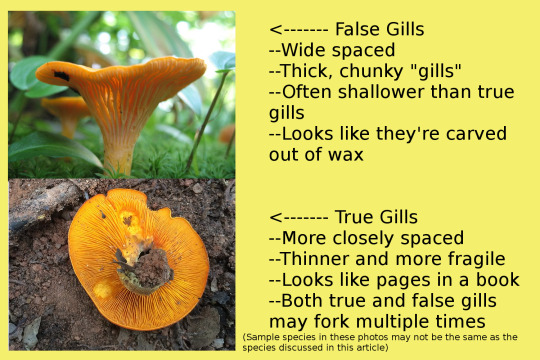
Other organisms it could be confused with and how to tell the difference: Yellowfoot looks a lot like golden/yellow Cantharellus chanterelles; the main difference is the darker-colored cap and sometimes hollow stipe in yellowfoot. Chanterelles may grow in soil, and favor conifers as yellowfoot mushrooms do. Yellowfoot and the chanterelles are all edible.
On the other hand, beware of the jack o’ lantern mushrooms (Omphalotus olearis, Omphalotus olivascens, and Omphalotus illudens)! It is another funnel-shaped mushroom that is orange in color, though the upper side of the cap may be a darker orange that looks brownish in some lights, with lighter-colored gills underneath; O. olivascens‘ cap may also have a greenish tint. Jack o’ lanterns have true gills instead of false. Like yellowfoot they may grow on rotting wood, though they do not grow on soil. Jack o’ lanterns are also bioluminescent and may glow at night.

Craterellus tubaeformis

Cantharellus cibarius

Omphalotus olivascens. By Jonny & Simone (Surfer) at Mushroom Observer, CCA-SA-3.0

Omphalotus illudens. By Adam Arendell (julius) at Mushroom Observer, CCA-SA-3.0
Anything else worth mentioning? Yellowfoot mushrooms are considered edible by most sources. However, the Peterson Field Guide to Mushrooms of North America, second edition, lists this species as “gray-gill chanterelle”, and describes it as not edible because “some mild but uncomfortable poisonings are reported from species in this group” (p. 206). “Group” is not specified but might refer to genus, or all populations of this species; I’m not sure. I couldn’t find any other sources, either books or websites, that corroborated the claim of toxicity (if you find any, feel free to let me know!) Chanterelles (Craterellus and Cantharellus) in general may make a small number of people sick just as other edible wild mushrooms can, but this does not make them widely considered poisonous and may be an effect of individual digestive sensitivities. As always, always be 100% sure you know exactly what mushroom you have and that it is definitely safely edible BEFORE you eat it, and always cook and eat a SMALL amount when trying a new edible mushroom for the first time. When in doubt, throw it out!
Further reading:
Forager Chef: Foraging and Cooking Yellowfoot Mushrooms
Mushroom Appreciation: Yellowfoot Chanterelle
KPMS: Yellowfoot, Winter Chanterelle
Mushroom Stalkers: Where to find Yellow-foot Chanterelles?
Did you enjoy this post? Consider taking one of my online foraging and natural history classes, checking out my other articles, or picking up a paperback or ebook I’ve written! You can even buy me a coffee here!
#mushrooms#mushroom hunting#fungus#fungi#mycology#foraging#mushroom foraging#wild foods#outdoors#nature#naturecore#science#biology#shrooms#forestcore#edible mushrooms#nature identification#long post
50 notes
·
View notes
Text
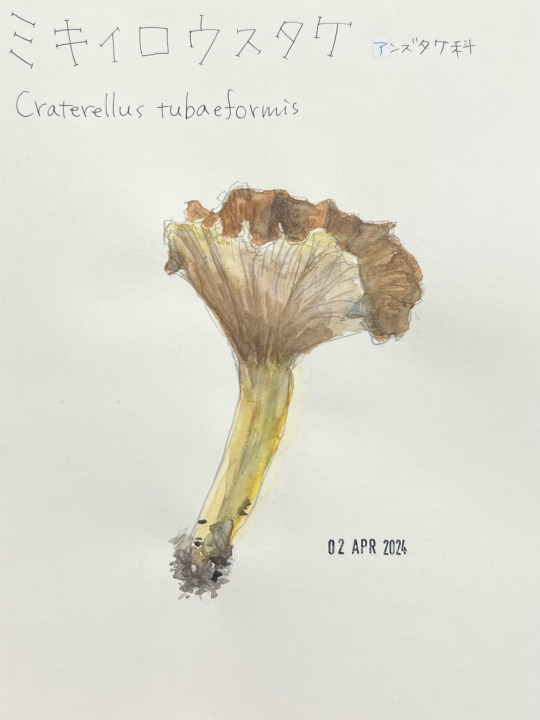
きのこ図鑑
No.362 ミキイロウスタケ
Craterellus tubaeformis
3 notes
·
View notes
Text
TOP ALBUMS 2023




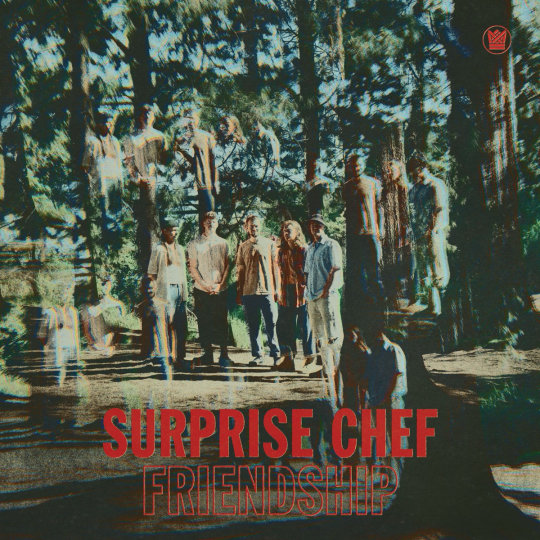
TOP ALBUMS 2023 (1/6)
[Psychedelic Soft Rock, Downtempo, Easy-Listening] DINA ÖGON – Oas (Playground Music) [Sweden]
https://www.youtube.com/watch?v=vDiVKbABQwE&ab_channel=NiceGuys
[Electronic, Downtempo, Easy-Listening] SKINSHAPE - Craterellus Tubaeformis (Lewis Recordings) [U.K]
https://skinshape.bandcamp.com/album/craterellus-tubaeformis
[Psychedelic Folk, Downtempo, Easy-Listening] HUW MARC BENNETT - Days Like Now (Albert's Favourites) [U.K]
https://huwmarcbennett.bandcamp.com/album/days-like-now
[Jazz, Downtempo, Easy-Listinening] GOTTS STREET PARK - On The Inside (Blue Flower Music) [U.K]
https://open.spotify.com/intl-fr/album/0PW6NRnAfrWlngoemmoa8K?autoplay=true
[Psychedelic Funk, Downtempo, Easy-Listinening] SURPRISE CHEF - Friendship EP (Big Crown) [Australia]
https://surprisechef.bandcamp.com/album/friendship-ep
0 notes
Photo

🇬🇧/🇩🇪/🇫🇷/🇪🇸/🇷🇺/🇵🇱🇨🇿/🇮🇹:⬇️ 🇬🇧: Winter Chanterelle / Yellowfoot 🇩🇪: Trompetenpfifferling 🇫🇷: Chanterelle en tube 🇪🇸: Craterellus tubaeformis 🇷🇺: Лисичка трубчатая 🇵🇱: Pieprznik trąbkowy 🇨🇿: Liška nálevkovitá 🇮🇹: Cantharellus tubaeformis Scientific name: Craterellus tubaeformis 🍄: 👍🏻🤩🥳🤤- edible #pilze #pilzesammeln #mushroomlover #mushroomphotography #mushroomhunting #mushrooms #mushroom #foraging #foraginguk #foragingforfood #wildforaging #mushroomspotting #mushroomhunter #hongos #macrophotography #naturephotos #fantasticfungi #pilzebestimmen #magicmushrooms #naturephotography Photo credit: @lorellemorel https://www.instagram.com/p/Cn5G0OKM48i/?igshid=NGJjMDIxMWI=
#pilze#pilzesammeln#mushroomlover#mushroomphotography#mushroomhunting#mushrooms#mushroom#foraging#foraginguk#foragingforfood#wildforaging#mushroomspotting#mushroomhunter#hongos#macrophotography#naturephotos#fantasticfungi#pilzebestimmen#magicmushrooms#naturephotography
1 note
·
View note
Text
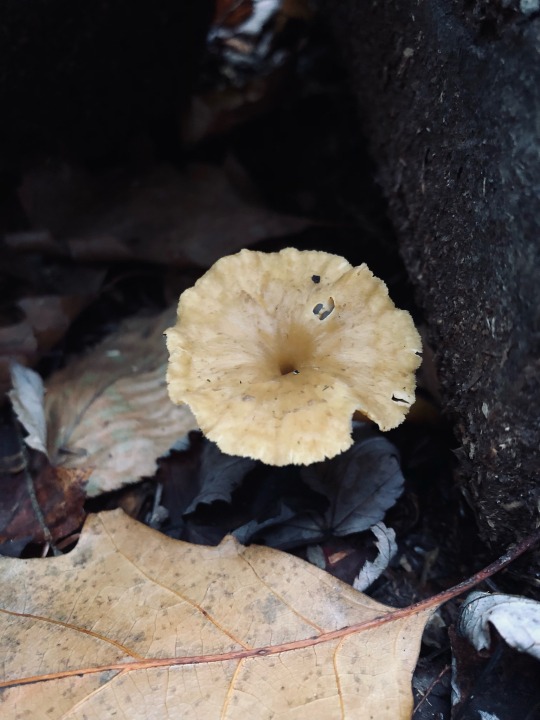




Winter Chanterelle - Craterellus tubaeformis
#mushrooms#fungi#foraging#forestcore#sporecore#mycology#eye on the forest floor#mycophile#winter chanterelle#craterellus tubaeformis
114 notes
·
View notes
Text



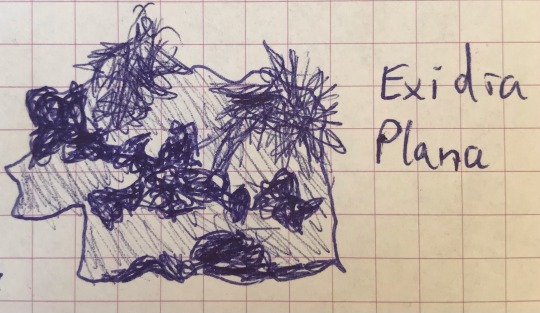





A small assortment of lil guys
#mushroom#mushrooms#fungi#coprinus comatus#lycoperdon perlatum#cordyceps militaris#exidia plana#clavulina coralloides#craterellus tubaeformis#lactarius torminosus#mushroom doodles#Art
16 notes
·
View notes
Photo
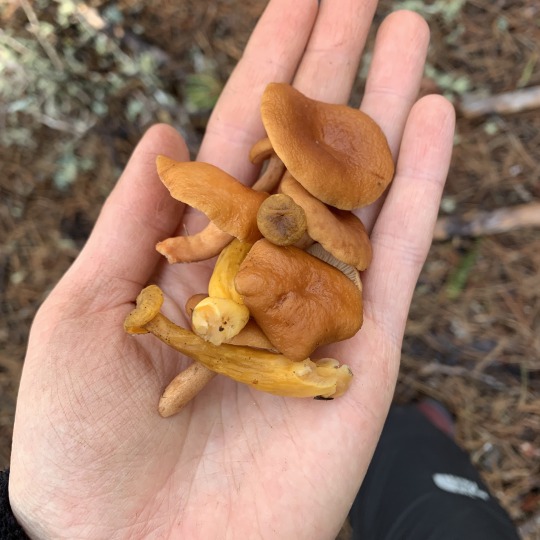
Candy Caps and Yellow Foot
#candy caps#yellow foot#lactarius rubidus#lactarius rufulus#lactarius#milk caps#fungus#fungi#mycology#mushrooms#mushroom#nature#mushroom hunting#winter#craterellus tubaeformis
45 notes
·
View notes
Text

yellowfoot / craterellus tubaeformis
Rhineland-Palatinate, Germany
#jojoliverphotography#mushrooms#fungi#mycology#fungus#cottagecore#nature#forest#nature photography#europe#germany#photography#photographers on tumblr#lensblr#wilderness#adventure#foraging#my photography
51 notes
·
View notes
Text



❝craterellus tubaeformis❞
(eng) yellowfoot / winter mushroom / funnel chanterelle
(swe) trattkantarell / höstkantarell
1 note
·
View note
Link
STUK: Sieniä voi syödä huoletta, vaikka niissä Tšernobyl säteileekin
Yli 30 vuoden takainen Tšernobylin ydinvoimalaonnettomuus saa yhä suomalaiset sienet säteilemään. Helsingin kaupungin ympäristöpalvelu kertoi maanantaina, että kahdesta sen tutkimasta suppilovahveronäytteestä oli löytynyt radioaktiivista cesiumia yli suositusarvon.
EDIT 17.1.2019:
Chernobyl disaster - Wikipedia
The Chernobyl disaster, also referred to as the Chernobyl accident, was a catastrophic nuclear accident. It occurred on 25–26 April 1986 in the No. 4 light water graphite moderated reactor at the Chernobyl Nuclear Power Plant near the now-abandoned town of Pripyat, in northern Ukrainian Soviet Socialist Republic, Soviet Union, approximately 104 km (65 mi) north of Kiev.[2]
Tšernobylin ydinvoimalaonnettomuus - Wikipedia
Tšernobylin ydinvoimalaonnettomuus tapahtui 26. huhtikuuta 1986 Ukrainan sosialistisessa neuvostotasavallassa Tšernobylin ydinvoimalaitoksessa lähellä Prypjatin kaupunkia. Lauantaina voimalan neljännen reaktorin määräaikaishuollon alkaessa oli sovittu tehtäväksi koe. Kokeessa oli tarkoituksena selvittää, pystyykö hidastuva generaattori tuottamaan sähköä jäähdytysjärjestelmälle niin kauan, että varajärjestelmät saadaan päälle. Jotta koe voitiin tehdä, muun muassa hätäjäähdytysjärjestelmä ja reaktorin pikasulkujärjestelmä kytkettiin määräysten vastaisesti pois päältä. Reaktorin tehoa pudotettiin sallitun raja-arvon alapuolelle. Suunnitteluvirheen takia reaktori oli nyt tilassa, jossa säätösauvojen työntäminen reaktoriin sekä jäähdytysveden kiehuminen kiihdyttivät ketjureaktiota, vaikka niiden pitäisi hillitä sitä. Reaktorin teho nousi hallitsemattomasti ja aiheutti suuren räjähdyksen.[1][2]
Suppilovahvero – Wikipedia
Craterellus tubaeformis - Wikipedia
#Yle.fi#Suomi#Finland#Stuk#Finnish Radiation and Nuclear Safety Authority#Tšernobyl#Tšernobylin ydinvoimalaonnettomuus#Chernobyl#Chernobyl disaster#Tšernobylin säteily#Chernobyl radiation#sienet#mushrooms#becquerel#becquerellia kilossa#becquerels per kilo#Suppilovahvero#Funnel chanterelle#Craterellus tubaeformis#millisievert#caesium-127
0 notes
Text



Early November picking of Yellowfoot [Craterellus tubaeformis] - Sweden, 5/11 - 21
#mushroom picking#chantarelles#photography#woods#autumn#forestcore#sweden#sverige#naturecore#mushroomcore#fungi#cabincore#foraging
11 notes
·
View notes
Text
I finally found some good mushrooms!
These are either Craterellus Tubaeformis or Craterellus Lutescens. Either way they are edible and delicious.
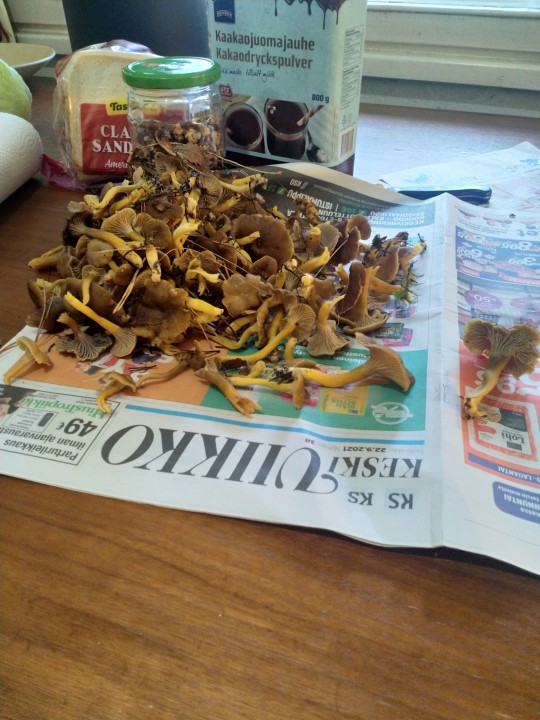



3 notes
·
View notes
Text


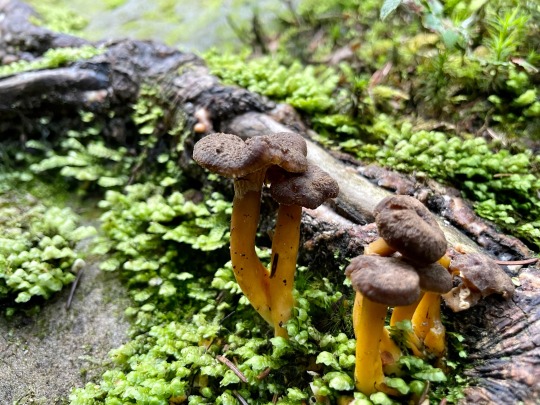
In the middle of the way
Trompetenpfifferling, Craterellus tubaeformis 05.09.21
#mushrooms#pilze#basidiomycota#fungi#mycology#wild fungi#pilz#pilzesuchen#mushrooms switzerland#mushrooms of switzerland#craterellus#hiking#hiking in switzerland
4 notes
·
View notes